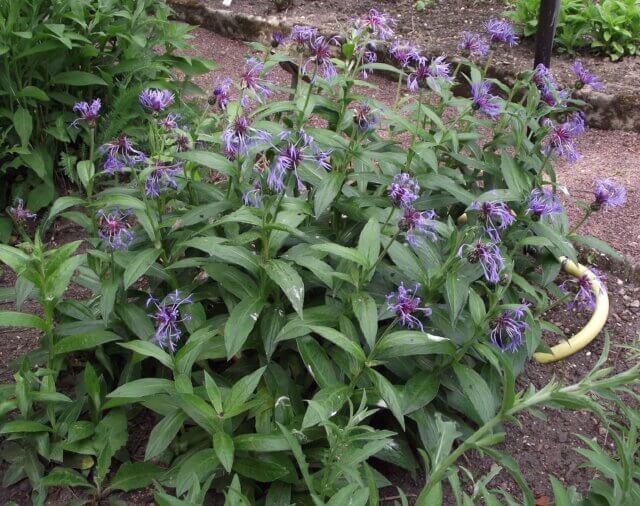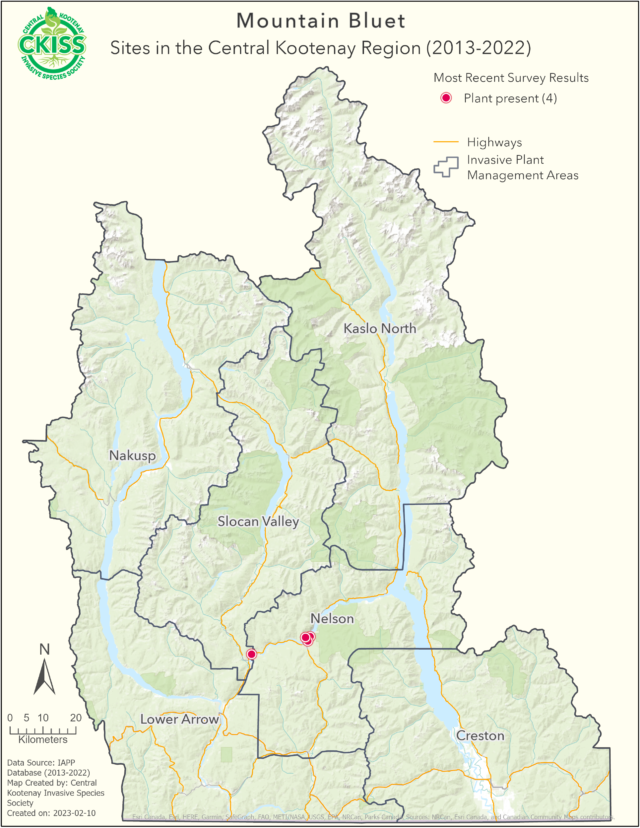Centaurea montana
Description
- Perennial herb with a taproot that grows between 30 – 80 cm long.
- Flowers have a purple-pink center surrounded by a blue fringe.
- Flower heads have large, green bracts with dark brown edges.
- Lower leaves are lance-shaped and grow up to 18 cm long.
- Undersides of leaves have wooly hairs.

Mature mountain bluet in bloom
Introduction and spread
- Mountain bluet is commonly grown as an ornamental flower.
- Native to the Mediterranean and Europe, it was likely brought here for use in gardens.
- This species continues to be sold and shared today, which can introduce the plant to new areas.
- Plants produce many seeds and can also spread by stolon. Plants can easily escape garden beds and invade roadsides, forests, and open fields.
- Illegal dumping of garden waste is an additional way that this plant can establish in natural areas.
Consequences of invasion
- Mountain bluet can self-seed and colonizes quickly, making it very invasive.
- It can invade agricultural pastures and decrease food sources for livestock.
- This species tolerates both dry and moist soils, allowing it to grow in many types of ecosystems.
- It can grow earlier in the spring and later in the fall than native plant communities, giving it a competitive advantage.
- It can outcompete native species, reducing biodiversity and forage available for animals.
Status in the CKISS region
- There is currently insufficient information about mountain bluet in the CKISS region to assign it a management category on the CKISS Annual Priority List.
- There is insufficient information for this species on its distribution, impacts, potential for spread, and/or feasibility of control.
- CKISS plans on carrying out inventory as required, monitoring known locations, and/or finding out more information from other regions.
- To learn more about how CKISS classifies and manages invasive species, see our Invasive Species Priority Lists page.
Integrated pest management options
- Mountain bluet is a common horticulture purchase, so education for gardeners and horticulturalists is important. Be PlantWise and visit Grow Me Instead to choose non-invasive alternatives to mountain bluet.
- Hand pulling, cutting, or mowing is effective before seeds have been produced.
- Entire root systems should be removed to avoid re-sprouting.
- This species has an extensive and long-lived seed bank, so follow-up treatments may be required.
- Some select herbicides are effective on this species.


